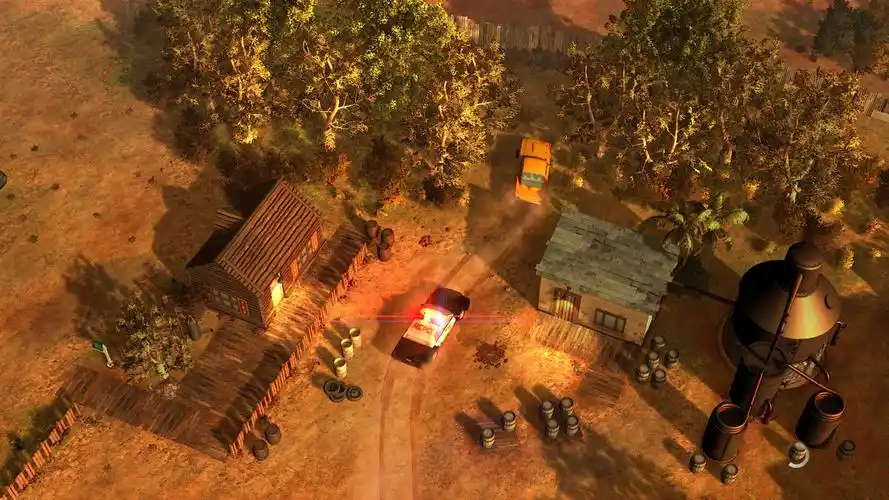Title: Beyond the Sign: How "Family Restroom Sign Installer Simulator VR: Place Missions Expansion" Redefines Empathy in Gaming
The virtual reality landscape is often dominated by the spectacular: high-octane shooters, fantastical adventures, and pulse-pounding horror experiences. Yet, nestled within this realm of the extraordinary, a unique subgenre of simulation games has carved out a devoted following by celebrating the mundane. Among these, the cult classic Family Restroom Sign Installer Simulator VR (FRSIS VR) achieved unexpected acclaim for its oddly satisfying, meditative gameplay. Now, its groundbreaking expansion, Place Missions, has arrived, transforming a quirky simulator into a profound commentary on accessibility, empathy, and the silent language of public spaces.
For the uninitiated, the core game tasks players with the meticulous job of installing family restroom signage in various facilities. Using realistic VR motion controls, players measure, level, drill, and fasten signs, all while managing tools and materials. The appeal lies in its ASMR-like satisfaction of a job well done and its hyper-focused, almost zen-like repetition. The Place Missions expansion, however, shifts the focus from pure installation to a more nuanced and critical concept: optimal placement.
The expansion introduces a new campaign mode where players are no longer simply following pre-marked drill points. Instead, they are hired as consultants by a diverse range of clients—a sprawling international airport, a renovated historic theater, a busy children's museum, and a massive shopping mall. Each mission begins not with a toolbox, but with a blueprint and a narrative brief.
The New Gameplay Loop: Analysis and Empathy

Upon arriving at a virtual job site, players must first assess the environment. Using new tools like a laser rangefinder and a crowd-flow simulator (a holographic overlay that predicts pedestrian movement), players analyze the space. The core challenge is no longer mechanical skill but analytical and empathetic reasoning.
- The Visibility Check: Is the sign immediately visible from multiple approach angles? A sign hidden around a corner is useless to a parent rushing with a distressed toddler.
- The Accessibility Audit: Does the proposed location comply with the Americans with Disabilities Act (ADA) and other inclusivity guidelines? Is the sign mounted at the correct height for someone in a wheelchair? Is the path to the door clear of obstacles? The game integrates real-world regulations, providing gentle tutorials on why these rules matter.
- The Practicality Assessment: Is the sign placed away from high-splash zones or areas where cleaning carts might damage it? Is it near enough to main thoroughfares without causing congestion?
This process forces the player to think like the users they are serving. A mission in the airport terminal, for instance, presents the challenge of guiding exhausted, disoriented travelers from a security checkpoint to a restroom. Placing the sign too early causes clutter; placing it too late means it’s missed entirely. The crowd-flow simulator provides immediate feedback, showing virtual families successfully finding the door or walking past in confusion.
Narrative Depth and "The Quiet Struggle"
Where Place Missions truly excels is in its subtle storytelling. Briefs from clients are not just dry instructions. The manager of the historic theater explains his dilemma: preserving the building’s aesthetic integrity while making it welcoming for modern families. The director of the children’s museum shares anecdotes of meltdowns avoided because of a well-placed, recognizable sign.
The game doesn’t shout its message; it whispers it through gameplay. You feel a genuine sense of accomplishment not when you simply fasten a screw, but when your strategic placement creates order from chaos. You are not just installing a sign; you are installing a waypoint, a moment of relief, and a statement that everyone is considered and welcome here. This is the "quiet struggle" of inclusive design, and the expansion makes you an active participant in solving it.
Tags:
Conclusion: More Than a Meme
Family Restroom Sign Installer Simulator VR began as an amusing meme—the absolute pinnacle of mundane simulation. The Place Missions expansion elevates it into something genuinely meaningful. It masterfully uses the immersive power of VR and the deliberate pace of simulation mechanics to teach lessons in spatial awareness, universal design, and empathy. It proves that a game’s value isn’t determined by its subject matter’s glamour but by its ability to connect us to the often-invisible structures that shape our daily lives. In making us better virtual installers, it subtly encourages us to be more observant and considerate citizens in the real world.


















